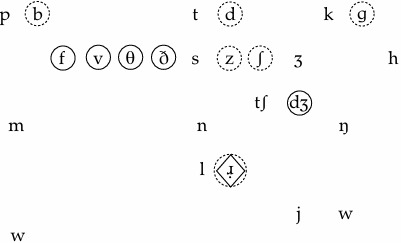

Grammar


Tenses


Present

Present Simple

Present Continuous

Present Perfect

Present Perfect Continuous


Past

Past Simple

Past Continuous

Past Perfect

Past Perfect Continuous


Future

Future Simple

Future Continuous

Future Perfect

Future Perfect Continuous


Parts Of Speech


Nouns

Countable and uncountable nouns

Verbal nouns

Singular and Plural nouns

Proper nouns

Nouns gender

Nouns definition

Concrete nouns

Abstract nouns

Common nouns

Collective nouns

Definition Of Nouns

Animate and Inanimate nouns

Nouns


Verbs

Stative and dynamic verbs

Finite and nonfinite verbs

To be verbs

Transitive and intransitive verbs

Auxiliary verbs

Modal verbs

Regular and irregular verbs

Action verbs

Verbs


Adverbs

Relative adverbs

Interrogative adverbs

Adverbs of time

Adverbs of place

Adverbs of reason

Adverbs of quantity

Adverbs of manner

Adverbs of frequency

Adverbs of affirmation

Adverbs


Adjectives

Quantitative adjective

Proper adjective

Possessive adjective

Numeral adjective

Interrogative adjective

Distributive adjective

Descriptive adjective

Demonstrative adjective


Pronouns

Subject pronoun

Relative pronoun

Reflexive pronoun

Reciprocal pronoun

Possessive pronoun

Personal pronoun

Interrogative pronoun

Indefinite pronoun

Emphatic pronoun

Distributive pronoun

Demonstrative pronoun

Pronouns


Pre Position


Preposition by function

Time preposition

Reason preposition

Possession preposition

Place preposition

Phrases preposition

Origin preposition

Measure preposition

Direction preposition

Contrast preposition

Agent preposition


Preposition by construction

Simple preposition

Phrase preposition

Double preposition

Compound preposition

prepositions


Conjunctions

Subordinating conjunction

Correlative conjunction

Coordinating conjunction

Conjunctive adverbs

conjunctions


Interjections

Express calling interjection

Phrases

Sentences


Grammar Rules

Passive and Active

Preference

Requests and offers

wishes

Be used to

Some and any

Could have done

Describing people

Giving advices

Possession

Comparative and superlative

Giving Reason

Making Suggestions

Apologizing

Forming questions

Since and for

Directions

Obligation

Adverbials

invitation

Articles

Imaginary condition

Zero conditional

First conditional

Second conditional

Third conditional

Reported speech

Demonstratives

Determiners


Linguistics

Phonetics

Phonology

Linguistics fields

Syntax

Morphology

Semantics

pragmatics

History

Writing

Grammar

Phonetics and Phonology

Semiotics


Reading Comprehension

Elementary

Intermediate

Advanced


Teaching Methods

Teaching Strategies

Assessment
Korean–English
المؤلف:
Mehmet Yavas̡
المصدر:
Applied English Phonology
الجزء والصفحة:
P199-C8
2025-03-19
804
Korean–English
The overlay of the L1 consonant phonemes onto the target English inventory results in the following:

Other Korean phonemes are /ph, p′, th, t′, kh, k′, tʃh, tʃ′, s′/.
Target phonemes that are completely missing in L1 include /f, v, θ, ð, ʤ/, and they are rendered as [p, b, t, d, tʃ] respectively in target English words. Although /b, d, g/ are not in the Korean phonemic inventory, [b, d, g] are present as allophones of /p, t, k/ between two voiced sounds. As a result, we expect difficulties in English /b, d, g/ targets when they are not in between two voiced sounds (e.g. book, cab, dog). Equally problematic are the /p, t, k/ targets when between two voiced sounds, as exemplified in the following erroneous productions: apart [əbɑɹ̣t], attack [ədæk], mocha [mogə].
[z] and [ʃ] exist in Korean as allophones of /s/. We repeat the distributional requirements here for convenience:

Consequently, we expect the target sea shells [si ʃεlz] to be rendered as [ʃi sεls].
Liquids present both phonemic and phonetic problems. The Korean r-sound is a flap and is in complementary distribution with the lateral; [ɾ] occurs intervocalically and [l] elsewhere, thus giving rise to failures to distinguish between target pairs such as feeling– fearing, soul– sore.
The mismatches between the vowel systems of L1 and L2 result in the following under-differentiations:

Other Korean vowels are /y, ø, ա/.
The syllable structure of Korean, which is described as (C) V (C) (C), is much simpler than that of English. Although the above formulation allows double codas, the actual combinations are very limited. As a result, the wide variety of double and triple onsets and codas in target English words are broken up by vowel insertions.
Korean stress patterns are quite different from those of English, mainly manifested as the rise in pitch on the initial syllable of the word or phrase. In addition to the mismatches in stress, Korean, as a typical syllable-timed language, does not have vowel reductions and this results in a clearly different rhythm.
The following summarizes the major trouble spots:
• missing target phonemes: /f, v, θ, ð, ʤ/;
• sounds existing as allophones;
• salient phonetic differences;
• insufficient separation of target vowel contrasts;
• onset and coda clusters;
• stress;
• rhythm.
 الاكثر قراءة في Phonology
الاكثر قراءة في Phonology
 اخر الاخبار
اخر الاخبار
اخبار العتبة العباسية المقدسة

الآخبار الصحية















 قسم الشؤون الفكرية يصدر كتاباً يوثق تاريخ السدانة في العتبة العباسية المقدسة
قسم الشؤون الفكرية يصدر كتاباً يوثق تاريخ السدانة في العتبة العباسية المقدسة "المهمة".. إصدار قصصي يوثّق القصص الفائزة في مسابقة فتوى الدفاع المقدسة للقصة القصيرة
"المهمة".. إصدار قصصي يوثّق القصص الفائزة في مسابقة فتوى الدفاع المقدسة للقصة القصيرة (نوافذ).. إصدار أدبي يوثق القصص الفائزة في مسابقة الإمام العسكري (عليه السلام)
(نوافذ).. إصدار أدبي يوثق القصص الفائزة في مسابقة الإمام العسكري (عليه السلام)


















